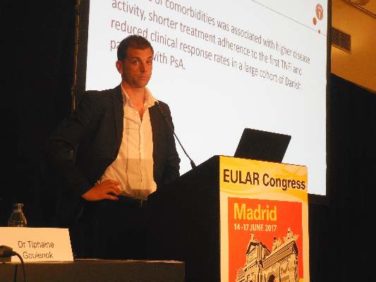FROM EAHAD 2017
The findings from a large cohort study of patients with moderate and severe hemophilia A have supplied benchmarks that can be used in developing new treatments, Johannes Oldenburg, MD, reported at the annual meeting of the European Association for Haemophilia and Allied Disorders.
More than 37% of 869 patients with moderate or severe hemophilia A who were on prophylaxis and who were enrolled in the noninterventional, prospective, long-term AHEAD international and German cohort studies experienced less than one bleed per year on average, and 50% had an annual bleed rate of less than two.
Furthermore, a median of 56% of those on prophylaxis had an annual joint bleed rate (AJBR) of less than one, and nearly 70% had an AJBR of less than two. Study subjects were enrolled from 22 countries at a mean age at screening of 23.4 years. Most (67%) had severe hemophilia A, and 79% were on prophylaxis, said Dr. Oldenburg of University Clinic Bonn (Germany).
Among patients in the international arm and the German arm of the study, the median annual bleed rates, respectively, were 1.2 and 2.5 in year 1, 1.2 and 2.2 in year 2, and 1.9 in each arm in year 3. Median AJBRs were 0.9 in each arm in year 1, 0.9 and 0 in year 2, and 1.0 and 0.8 in year 3.
The data provide a valid benchmark for new products and therapeutic approaches, Dr. Oldenburg concluded.
Dr. Oldenburg is a consultant and speaker for Baxalta (which is now part of Shire) and has received grant/research support from the company.





